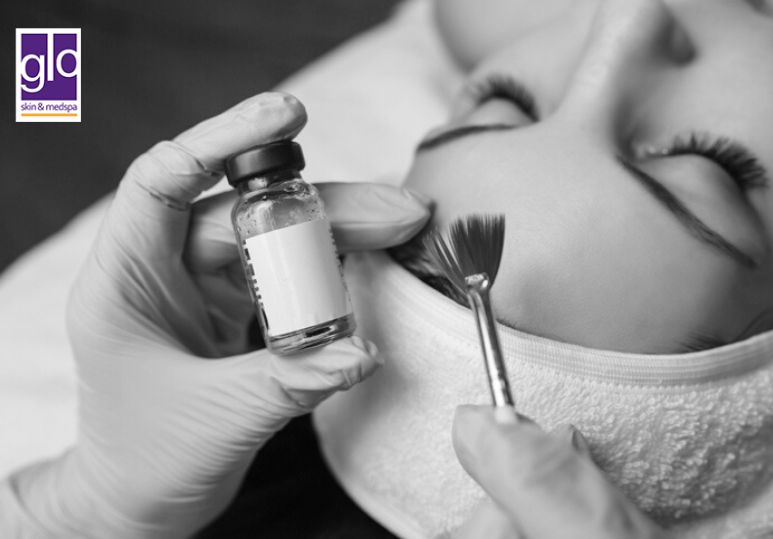Chemical Peels And Sun Damage
How Does Sun Damage Skin?
UV rays have the potential to damage the skin, and the severity of damage is often determined by your genetics and amount of UV exposure. If you have too much UV exposure, from the sun or from man-made sources such as tanning beds, it can cause skin cancer, actinic keratosis (a rough, scaly patch or bump on the skin that can turn into skin cancer), solar elastosis (yellowed, thickened skin that lacks supportive tissue), and more. Other signs of UV exposure include premature aging, including the development of sunspots, wrinkles, fine lines, and hyperpigmentation. UV rays can cause skin cells to have a slower regeneration rate that delays new cell growth, causing skin imperfections to last for longer.
How Can A Chemical Peel Correct Sun Damage?
Although chemical peels cannot be used to reduce cancerous skin conditions, they can be used to help fight the cosmetic impacts of UV damage. Specifically, chemical peels can help reduce the appearance of fine lines and wrinkles, sun spots, and hyperpigmentation. Chemical peels are a form of intense exfoliation that remove damaged skin cells that contain high levels of pigmentation due to sun damage. By removing the topmost layer of skin through exfoliation, chemical peels encourage faster skin cell regeneration. Replacing old cells with new ones helps to reduce the appearance of hyperpigmentation and sunspots as well as fine lines and wrinkles.
Where Can Chemical Peels Be Used?
Although it is most common for people to receive chemical peels on their face, they can also be used on other parts of the body. Many people get hyperpigmentation and sun spots on their arms, hands, and neck. These areas are some of the most common parts of the body to be exposed to UV rays and they are highly visible, making them common areas for chemical peel treatment. If you have other areas of concern, discuss this with the skin care specialist administering your chemical peel. The size of the treatment area may alter how long this treatment takes.
Chemical Peels In Edmonton
If you want to reduce the appearance of sunspots, hyperpigmentation, or fine lines and wrinkles, choose chemical peels administered by trained professionals. At Glow Skin & Medspa, we understand that everyone’s skin is different, which is why our highly trained team of skin care specialists will conduct a free consultation before your chemical peel and learn more about your skin to customize your experience. Our team of skin care specialists are passionate about the services we provide and are committed to client education, so you will leave the consultation knowing exactly what to expect from your personalized chemical peel. To book your chemical peel with Glo Skin & Medspa in Edmonton, call 1-780-481-9772 or fill out the online contact form to reduce the appearance of UV damage.
FAQ
Q: Do I need to do anything to prepare for a chemical peel?
A: Preparing your skin before a chemical peel will help you get the best results. This includes staying hydrated, avoiding exfoliating shortly before treatment, avoiding other cosmetic treatments, and more. Learn what to do to get ready by reading How To Prepare For Your Chemical Peel Treatment.
Q: How many chemical peel treatments will I need?
A: Although you will see some improvement from the initial session, multiple treatments will deliver the best results. 3 treatments are recommended, with 4 to 6 weeks in between each treatment to give the skin time to heal.
Q: Do I need to alter my skin routine after I receive a chemical peel?
A: Your skin will need some time to heal after your chemical peel. For optimal results, keep your face hydrated with unscented moisturizer and avoid exfoliating products. You can expect your treatment area to flake or peel after your chemical peels, but it is important that you do not scrub or pick at this skin. For more information about your post-chemical peel skin care routine, read How to Take Care of Your Skin Following a Chemical Peel Treatment.



